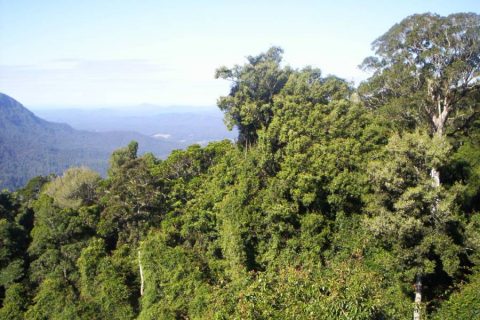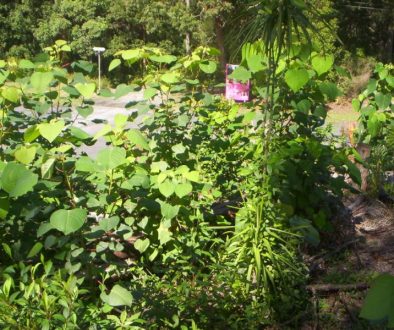How forests influence the environment

Understanding forests and applying that knowledge to permaculture gardens is a major topic in permaculture. The following is a summary an interview I did on community radio broadcast in July 2017. The full interview can be accessed at radio interview forests and the environment.
Air and temperature
Plants contribute about half of the Oxygen in the air on Earth and the surrounding atmosphere. The other half is supplied by phytoplankton – single celled photosynthesizing organisms floating in the ocean. Without forests, the Oxygen breathing life on earth (including humans) would perish. The ozone layer would be so thin that temperatures on Earth would be roasting by day and freezing by night.
Another way that forests regulate global temperature is by Carbon sequestration. It’s well known that trees pull Carbon out of the air and store it in their bodies, acting as a Carbon sink that prevents catastrophic global warming. What is less well recognised is that enormous amounts of Carbon from dead plant and animal matter is sunk into forest soils. To give some idea, almost all fossil fuel comes from Carbon sequestered by plants in soil, the exception being dead phytoplankton on the ocean floor.
Soil
Topsoil, the brown stuff in the first 1-50cm of soil is quite distinct from the coloured subsoil below it. It contains most of the fertility, and has both excellent drainage and water retention properties. It is Carbon rich and created by forests – from decaying plant & animal matter and an extremely complex soil ecology. A teaspoon of forest soil contains billions of microbiological life forms. It takes a forest about 100 years to create 1mm of topsoil and one day for a careless human to remove it. To be clear – forests are largely responsible for creating the fertility on Earth.
Water
Forests add rainfall into the ecosystem and conserve it. Water evaporates from the ocean and moves over land as humid air. Above forests float a complex cloud of tiny, living particles such as pollen and micro organisms. These particles act as nuclei over which humid air condenses, forming rain drops. So take away the forests and you get drought.
Condensation of humid, misty air also occurs on forest leaves and drips to the ground. On seaward facing ridge tops the water dripping off the forest canopy can be several times more than recorded rainfall, which is often also above the local average. Thus, it is fatal for any society to remove these strategic forests, which is why a traditional Hawaiian taboo protected theirs.
Forests break up rainfall, slow it down and absorb it into soil. As noted above, the soil was created by the forest and is a perfect moisture absorbing and retaining medium. Water flowing on the soil surface may travel a metre/ second. Water flowing through the soil may travel more like a metre/ year. Thus, forested rivers flow constantly despite erratic rainfall because water is flowing through the soil months or years after it fell as rain.
Trees also transpire water into the air which forms rain clouds. Most rainfall in the Amazon basin has not come directly from the ocean, which might be hundreds of kilometres away. It has already passed through the forest transpiration process, probably many times. If you catch a plane, keep a lookout for forests creating their own cloud cover.
Society
Imagine what it would be like if our society understood the role of trees. In common with many wise, traditional societies we would revere forests and logically view their destruction as an act of sabotage against ourselves and life on Earth. Our political behaviour would be very different although we can turn this all around now with just one policy – “Conserve and increase soil organic matter”. You can only do this by forest conservation, extensive reafforestation, and by establishing trees as the core unit in our agricultural landscapes. A host of sustainable knock on effects would then occur. If you have a lot of forest, you have good biodiversity. If you have well forested catchments, stream banks and wetlands then you have viable waterways.
In urban areas, increased vegetation is of crucial value in improving the environment. It can moderate temperature, noise, pollution and slow down water. A surprising amount of food can be produced in small spaces, freeing up rural areas for much needed reafforestation.



